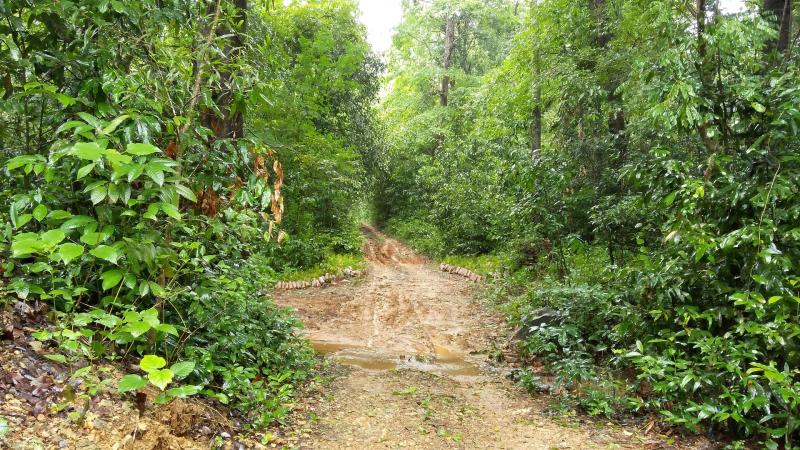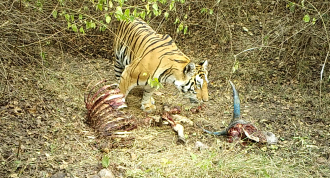
Restoring degraded forests by planting trees is often offered as an antidote for mitigating global warming. Since trees take in carbon dioxide, a greenhouse gas, and store in other forms within plant matter and soil, several climate policies focus on tree planting as a strategy. However, not all forests are the same in terms of storing carbon for extended periods and sensitivity to imbalances in the climate. Understanding how different natural and man-made forests differ in these respects can therefore can be important for navigating the climate crisis.
In a recent study published in the journal Environmental Research Letters, researchers from the Columbia University and The Nature Conservancy, USA, in collaboration with the Nature Conservation Foundation, Mysore, have assessed the ability of natural forest species and single-species (monoculture) plantations to capture and store carbon over a long period. It was funded by the NatureNet Science Fellows Program and the Earth Institute Fellows Program.
The researchers carried out the study in five tiger reserves in the Western Ghats, where timber plantations were rampant in the past. Trees like teak (Tectona grandis) and Eucalyptus were once grown here. Following the strengthening of the Indian conservation laws in the 1950-1980s, the focus shifted from commercial timber cultivation to the protection of forests. This effort led to the growth and establishment of mature (>40 years) teak and eucalyptus trees alongside natural forests (evergreen and moist deciduous forests) in those areas.
"Our study sites lay within areas that were formerly managed for timber and plantations. These were brought under strict protection as national parks and wildlife sanctuaries 40-50 years ago," says Dr Anand Osuri. He is a scientist at Nature Conservation Foundation and the corresponding author of the study. "This transformation created the rare opportunity for comparing the carbon-storing abilities of mature plantations and forests," he adds.
The researchers tested the hypothesis that species-rich natural forests exhibit greater stability in capturing carbon across years and are less sensitive to climatic variations such as droughts when compared to monoculture plantations. This was done by examining inter-annual variations in rates of carbon capture.
Initial results from field studies conducted in Anamalai Tiger Reserve showed that evergreen forests had higher species richness when compared to deciduous forest, teak and eucalyptus plantations. The results also showed that plots with high species richness had greater carbon stored above-ground in the tree parts - in this case, evergreen forest plots had the highest.
As a next step, using remote sensing data, the carbon capture stability, that is, the average rates of carbon capture through photosynthesis by trees was estimated in Anamalai Tiger Reserve, Parambikulam Tiger Reserve, Wayanad Wildlife Sanctuary, Rajiv Gandhi Tiger Reserve and Bhadra Tiger Reserve for the period 2000-2018. Differences in rates of carbon capture were estimated for wet (September-December) and dry seasons (January-April). Understanding the seasonal variation in rates of carbon capture is crucial to explain responses of trees to climatic perturbations such as droughts, particularly in South Asia.
The results of this study showed that during the wet season, carbon capture rates were 4-9% higher in teak and eucalyptus plantations than in evergreen and deciduous forests. But in the dry seasons, the average rate of carbon capture by plantation was 3-29% lower than that of evergreen and deciduous forests. Therefore, plantations had higher or similar rates of carbon capture only in the wet seasons. The stability of capturing carbon by natural forests was found to be consistently higher (evergreen forests > deciduous forests, eucalyptus plantations > teak plantations). This difference in the stability of capturing carbon is caused by lower resistance to drought situations by plantations.
Altogether, the results suggest that species-rich forests are more reliable than single-species plantations for carbon capture and are more stable particularly in drought situations.
The results also have implications on the trees planted under compensatory afforestation programmes like CAMPA. The researchers suggest that deforestation of species-rich natural forests cannot simply be compensated by planting trees, especially monocultures. Instead, forest restoration and mixed-species plantations using native species must be prioritized, alongside stronger protection of existing forests.
"We need to expand our understanding of alternatives to monoculture plantations. We need to consider how effective these habitats are at harbouring biodiversity, and at providing ecological benefits such as carbon sequestration, water regulation and livelihoods," concludes Dr Osuri.
This article has been run past the researchers, whose work is covered, to ensure accuracy.






